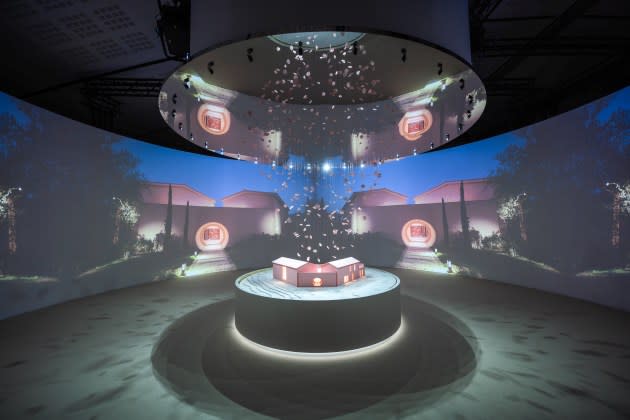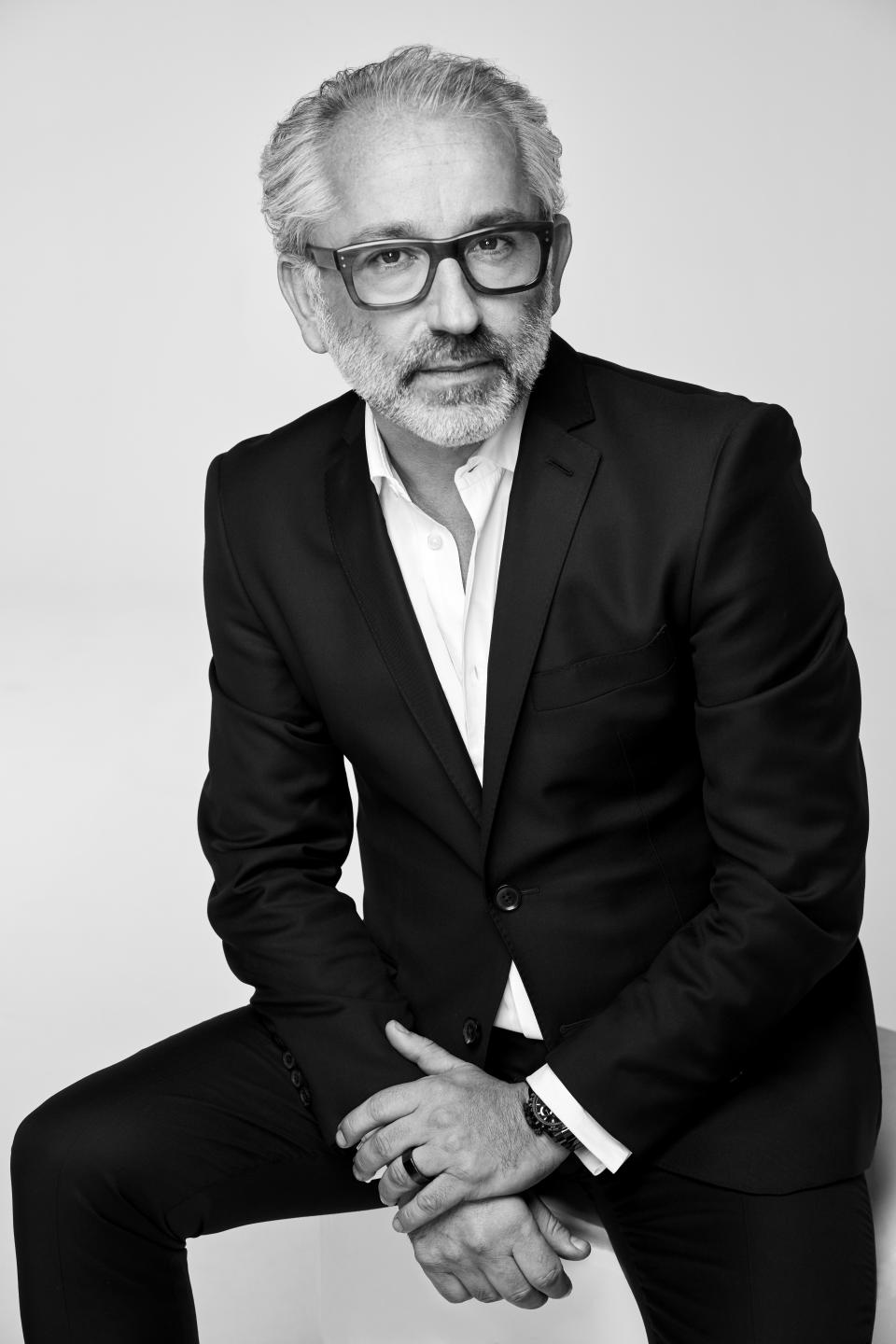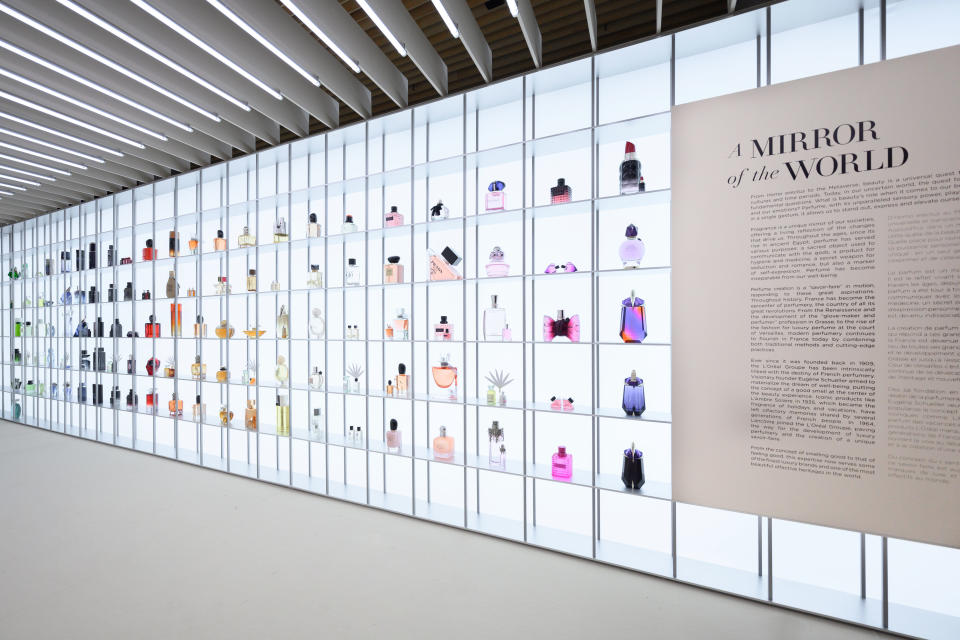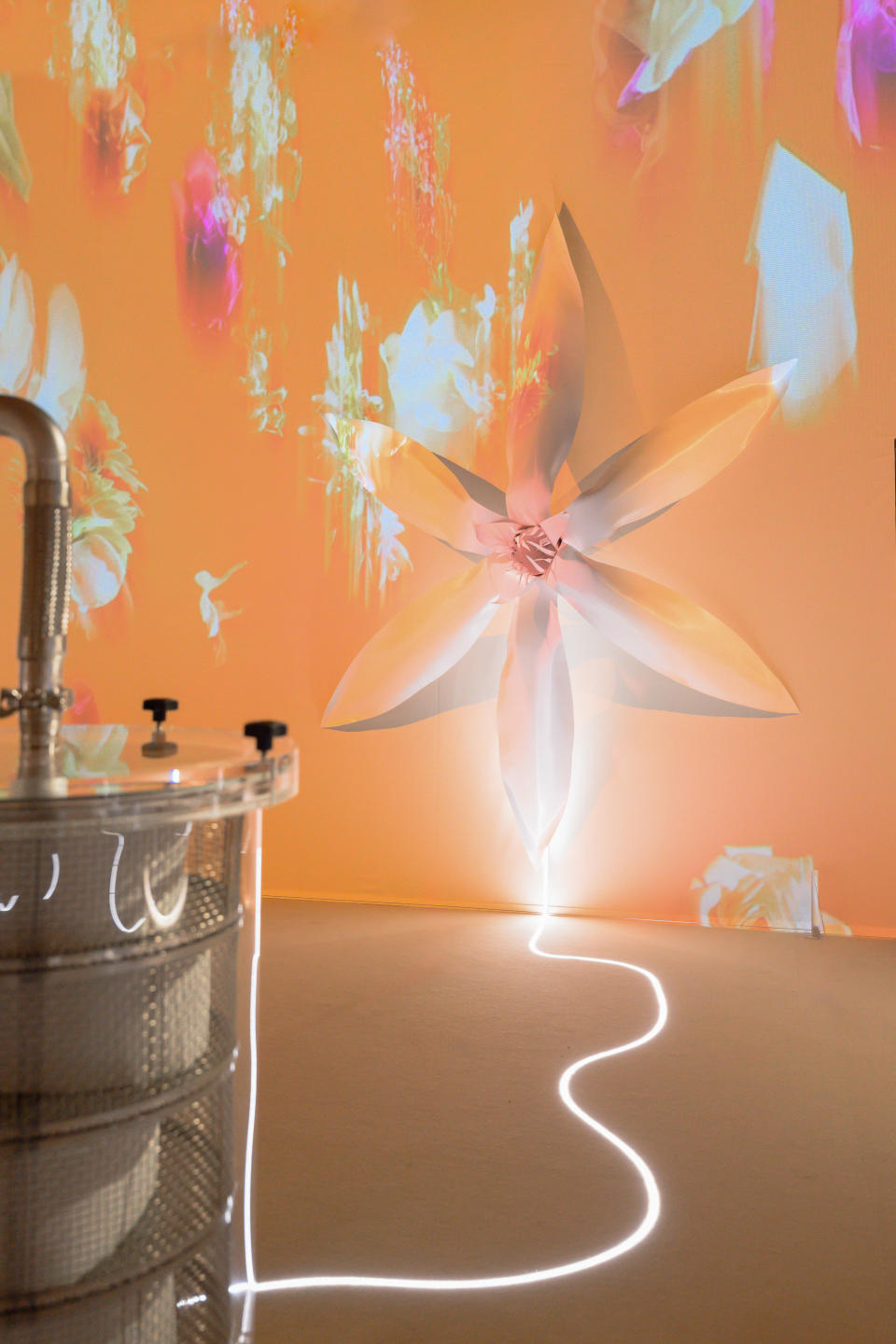L’Oréal Unveils Its Art and Science of Fragrance

PARIS — L’Oréal offered a taste of the secret sauce making it a perfume powerhouse.
The company, now the world’s largest fine fragrance sales generator, hosted an event Tuesday called “The Art & Science of Fragrance” at Paris’ Carrousel du Louvre for journalists from 28 countries.
More from WWD
Cyril Chapuy, president of L’Oréal Luxe, told WWD the exhibit was to display how the group cooks up fragrance. “We wanted to show you all the [parts] of the recipe from, obviously, the ingredients to the olfactive composition to the glassmaking to the storytelling,” he said.
Fragrance boasted the fastest-growing sales of all L’Oréal product categories last year, notching up 16.9 percent gains.
Industrywide, perfume sales started soaring again two years ago. Chapuy noted two explanations for that.
“First one is the increased penetration of fragrances with the young generation worldwide,” he said, pointing to the under-30 set. “It’s the case especially in the U.S., where you have lots of new consumers who have become passionate about fragrances.”
These includes African Americans and Hispanics, who are helping spur a rise in intense, long-lasting olfactive juices.
“It is the case also for China, where the young generation uses much more fragrance than their parents,” Chapuy continued. “They see it as a great self-expression tool.”

Emerging markets overall — such as Latin America, Southeast Asia and India — are key opportunities for fragrance expansion.
L’Oréal Luxe’s total business grew by 21 percent in emerging markets. “It’s really a major growth driver for the division,” Chapuy said. “Because in the emerging regions, 230 million additional consumers are going to have access to luxury beauty by 2030.”
Emerging markets should generate about one-third of the luxury market growth looking ahead.
There are other shifting trends. Fragrance is no longer primarily for seduction. “It’s part of your personality,” said Chapuy, adding that’s the allure of having a whole fragrance wardrobe, with perfumes sometimes mixed or layered. “If you look at the hashtag perfumetok on TikTok, it’s all about that, about personalization.”
He explained perfume is about well-being. “There is a kind of dopamine effect linked to fragrance,” Chapuy said. “When you spray a fragrance you love, it’s incredibly mood boosting.”
A second main phenomenon driving the fragrance category’s development is its premiumization, with consumers increasingly valuing high-quality and highly creative perfumes, including exclusive lines.
L’Oréal Luxe has had its own in-house olfactive department for the past decade, and a research and innovation department focusing on perfume.
“So the capacity of our juices to be technically superior is a big strength of L’Oréal Luxe, beyond the quality of the brands we have and the teams,” Chapuy said. “That’s why the exhibition is called ‘The Art & Science of Fragrance.’”
Guests first walked through a long corridor flanked by one wall showcasing L’Oréal’s greatest perfume hits, such as Cacharel’s Anaïs Anaïs, YSL’s Opium and Armani’s Acqua di Giò. The other had a timeline of perfume milestones, like the smell of freedom in the ’60s, and authenticity and minimalism in the ’90s.

For perfume packaging and formulation, sustainability is a watchword for L’Oréal.
“As part of L’Oréal for the Future, we took some very ambitious commitments through 2030,” said Marie-Pia Schlumberger, sustainability director at L’Oréal Luxe, referring to its sustainability program. “Our responsibility is to lead the shift toward a more mindful luxury beauty and to create the codes of luxury beauty of tomorrow, pairing desirability and sustainability.”
L’Oréal has committed to reducing by 20 percent its product packaging, for instance. “We are designing all our blockbusters or bestsellers, but also launches, in order to make them refillable, so that the consumer can keep its beautiful bottle, while reducing drastically the impact on the environment,” Schlumberger said.
When a 50-ml. Prada Paradoxe bottle is filled twice with a 100-ml. refill, the packaging material used overall is reduced by 40 percent. There’s less waste involved, too.
“It’s also moving from the linear model — buy, use, throw — to a more circular one,” Schlumberger said. “This is one of our major moves to change the way our consumer will use our product. True luxury is made to last.”
However, changing consumer behavior is not often easy. “It’s also a great opportunity,” she said. In-store beauty assistants can explain to consumers the beauty of refillables, including their cost-savings that run between 15 percent and 25 percent.
In China, more than 20 percent of Lancôme’s Absolue top-of-the-range skin care sales are made through refills. “I would call it responsible consumption,” Chapuy said.
L’Oréal is working with its spokespeople and influencers as advocates.
Another group commitment is that by 2030, 95 percent of product ingredients will be bio-based or come from circular processes. The bio-based ingredients are to be fully sustainably sourced and traceable, and already today, it has reached the level of 92 percent.
Green sciences play an important role to hit the goals, too. L’Oréal, for instance, partnered with Cosmo International Fragrances on an exclusive green sciences-based extraction process, allowing for the true scent of a fresh flower to be captured using only air. One of the machines, containing tuberose, was displayed at the event.
There was also a new fragrance bottle refill service inspired by Mugler, which has produced refillable flacons since its launch into perfumery in 1992. “We wanted to enlarge the offer to other feminine blockbusters of our portfolio,” Schlumberger said.
So a refill fragrance wall, for in-store use, was created and exhibited. Alongside Mugler’s Angel and Alien, it included scents such as Lancôme’s La Vie Est Belle and YSL’s Libre. Pilots are underway in two Sephora locations in France.

Other exhibits in the event snaking through vast rooms offered a look into how the Prada Paradoxe bottle was crafted and various olfactive elements within YSL’s Libre fragrance. There was a miniature model of the Rose House at Lancôme’s Le Domaine de la Rose in Grasse, France, which operates using ecological horticultural methods. In the Louvre, guests could sniff different rose varieties grown there.
“L’Oréal is the leader of beauty, and now L’Oréal is number one of luxury beauty. We have to be the ones pushing for sustainable, responsible consumption,” Chapuy said.
The event unfurled five days after the group revealed it had expanded its fragrance portfolio, inking a worldwide long-term license for beauty products with Miu Miu, and making a minority investment in Chinese luxury perfume brand To Summer.
Could more fragrance-related investments be in the offing? “On this we are extremely open,” Chapuy said. “If we see new, interesting, additional complimentary opportunities [with potential], we will always be open to initiate discussions.”
Best of WWD

